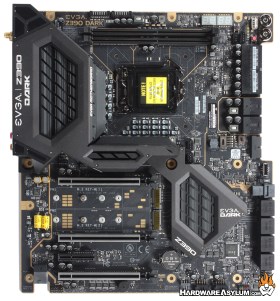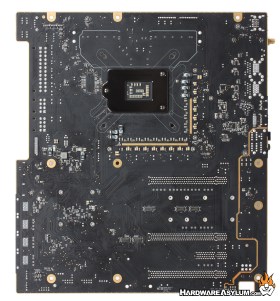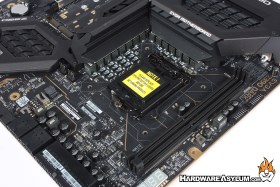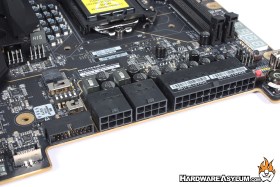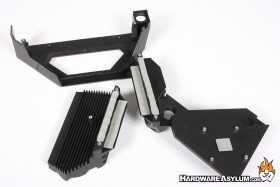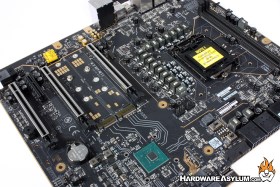EVGA Z390 Dark Motherboard Review
Author: Dennis GarciaBoard Layout and Features
The EVGA Z390 Dark is an extended ATX motherboard featuring a matte black PCB and gold accents scattered around the PCB and along the edges. Two things you will notice right away. The first is an almost full coverage shroud that starts with the I/O connections and extends over the Z390 chipset. The second is the absence of expansion slots. I kid you not this board only has four PCI Express slots and yet the board is covered with parts and components.
The biggest change to the layout is something we will talk about in a moment.
Looking at the back of the motherboard we can get an indication as to how the motherboard is constructed, most notability, how the PCI Express slots are wired. From this we can determine which slots are primary and secondary in terms of bandwidth and better understand optimal performance. There are a few surface mounted components near the VRM and chipset.
The EVGA Z390 Dark has a very unique board layout that many will say is fresh and new while I’m sitting here saying "I have seen this before". Back in 2003 (yes, over 16 years ago) Soltek released a motherboard called the SL-K8AN2E-GR. This was a board that I reviewed that used the nVidia nForce3 chipset and had the VRM located near the I/O and memory located across the top. Overall the design idea was to allow better airflow to the heatsink and offered a number of other benefits.
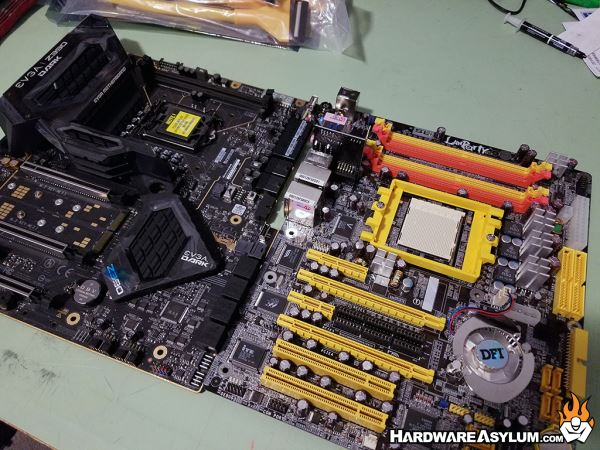
In 2005 I DFI made the same design decision and placed the memory across the top of their LanParty nF4 SLI-DR (above) which was iconic for two reasons. First the board was one of the premier overclocking motherboards for the Althon64 939 and the first to support NVIDIA SLI. You had to physically set jumpers on the motherboard to split the PCI Express lanes but it worked quite well and allowed you to double video card performance.
Incidentally DFI also offered “Dark” editions of their motherboards too. Coincidence?
EVGA claims the Z390 Dark to have a 17 phase VRM. Counting the chokes around the CPU socket you’ll find 16, (12 for the CPU, 1 VSA, 1VCCIO, 2 VGT) the last phase is located near the memory sockets and powers the memory PWM.
Rotating the CPU socket affords a number of benefits in a modern enthusiast build. Incoming air is unobstructed as it passes over the CPU and VRM heatsinks. It also places all of the CPU and motherboard power connectors to the same location. Per the EVGA standard these are rotated 90 degrees thus helping with cable management and airflow.
Given the overclocking nature of the Z390 Dark you only get a single bank of dual channel memory and supports standard speed DDR4 modules with overclocking support beyond 4600Mhz. A maximum of 32GB is addressable with the proper module density.
While on the subject of VRM coolers, the one used on the Z390 Dark his HUGE and broken into three parts. The first is simply a cover over the largest of the VRM coolers. There is a notion that the power phases work in progression and activate more phases when they start to reach their power limit. Because of this there is no reason to connect it to the smaller heatsink that also shares its heat output with the chipset.

